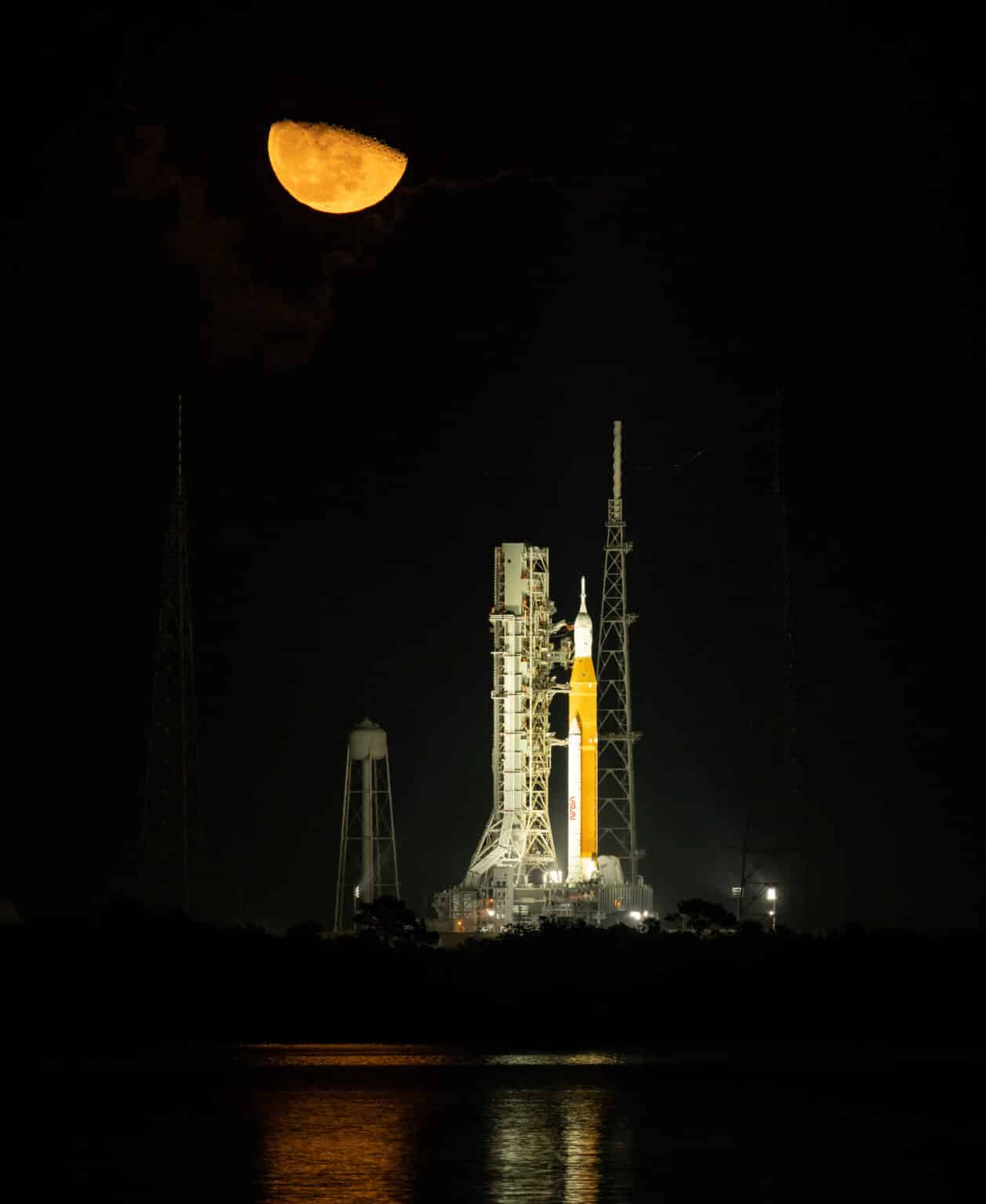NASA’s Orion spacecraft, as part of the Artemis program, is currently en route to the Moon following the triumphant launch of the Space Launch System (SLS), the most formidable rocket in the world. SLS rose from Launch Pad 39B at NASA’s Kennedy Space Center in Florida at 12.17 p.m. IST hauling an unmanned Orion on Wednesday, November 16 2022 to conduct its first test flight.
With the Orion spacecraft, Space Launch System (SLS) rocket, and ground systems at Kennedy Space Center in Cape Canaveral, Florida, Artemis I, originally Exploration Mission-1, will be the first comprehensive test of NASA’s deep space exploration systems. Artemis I, the first of a series of progressively arduous missions, will be an automated flight test that will serve as the basis for human deep space exploration and show our ambition and courage to take human civilization to the Moon and further out into the unknown.
NASA and the Artemis 1 Lunar Mission
The launch is the first milestone of a voyage that will see Orion go 40,000 miles beyond the Moon and then return to Earth in a little over 25 days. The project, termed Artemis I, is a crucial facet of NASA’s Moon to Mars exploration strategy, which prioritizes such expeditions for the benefit of humanity. Before dispatching astronauts on the Artemis II mission, the Artemis I program is a crucial test for the organization.
NASA Administrator Bill Nelson recounts how moved he was at the time of the launch, “What an incredible sight to see NASA’s Space Launch System rocket and Orion spacecraft launch together for the first time. This unmanned flight test will push Orion to the limits in the rigors of deep space, helping us prepare for human exploration on the Moon and, ultimately, Mars,”
NASA Receives 12th Successive ‘Clean’ Financial Audit Rating
After reaching its first orbit, Orion unfurled its solar arrays and engineers began examining the spacecraft’s systems. The rocket’s upper stage engine effectively ignited for roughly 18 minutes about 1.5 hours into the journey to provide Orion the powerful thrust it required to launch it out of the Earth’s orbit and toward the Moon.

After reaching its first orbit, Orion unfurled its solar arrays and engineers began examining the spacecraft’s systems. The rocket’s upper stage engine effectively ignited for roughly 18 minutes about 1.5 hours into the journey to provide Orion the powerful thrust it required to launch it out of the Earth’s orbit and toward the Moon.
Orion has disengaged from its top level and is now traveling to the Moon by using the guidance of its service module, which is the dynamic mechanism developed by the ESA (European Space Agency) as part of an international partnership.
According to Jim Free, NASA’s deputy associate administrator for the Exploration Systems Development Mission Directorate, “Orion is currently on its path to the Moon after a long journey to get here.” Because of this successful launch, NASA and our partners can travel farther than ever in orbit for humanity’s benefit.

Ten mini CubeSats, or interplanetary probes for science and technology, will launch from a ring that linked the launch system to the spacecraft over the next several hours. Each CubeSat has a unique mission that may help close knowledge gaps about the solar system or showcase technology that could be used for planning missions to explore the Moon and other astronomical objects in the future.
Orion on Its Way to the Moon
About eight hours following its launch, Orion’s service module will begin to carry out the first of numerous burns to maintain Orion’s direction toward the Moon. Mission controllers at NASA’s Johnson Space Center in Houston will perform any necessary checkouts and orbital adjustments during the next few days. On November 21, Orion is anticipated to fly by the Moon, paying an almost close visit to the lunar surface en route to remote retrograde orbit thousands of miles beyond the Moon in a highly sustainable orbit.
On Nov. 4, the Orion spacecraft and SLS rocket arrived at Kennedy’s Launch Pad 39B where they weathered Hurricane Nicole. After the storm, personnel carefully examined the rocket, spacecraft, and supporting ground systems to ensure there were no substantial effects from the adverse weather.
Due to a defective temperature sensor on August 29 and a liquid hydrogen leak at an interface between the rocket and mobile launcher on September 4, engineers earlier aborted two prior launch attempts and wheeled the rocket back to the Vehicle Assembly Building (VAB) on September 26 in advance of Hurricane Ian. Teams successfully patched up the leak issue and exhibited improved tanking techniques before rolling back to the VAB. Technicians conducted routine maintenance while within the VAB to fix mild damage to the foam and cork on the thermal protection system and to replace or swap out all of the system’s batteries.
Thousands of people from around the globe are contributing to Artemis I, including small businesses providing subsystems and components and international and university partners. These partners include contractors who built Orion and SLS and the ground facilities required to launch them.
The first woman and the first person of color will touch down on the Moon through NASA’s Artemis expeditions, opening the door for a permanent lunar presence and functioning as a “launching pad” for astronauts traveling to Mars.

The Artemis I Mission
When the Orion spacecraft and the Space Launch System (SLS) rocket embark for the first time from NASA’s revamped Kennedy Space Center in Florida, all eyes will be on the iconic Launch Complex 39B. To establish long-term human habitation on the Moon for many years to come, Artemis I will be the first of several missions that get increasingly challenging and intricate.
Before the first flight with crew aboard Artemis II, Artemis I’s main objectives are to show Orion’s systems in a spaceflight environment and to guarantee a safe return, descent, touchdown, and restoration.
READ MORE|| https://tdznkwjt9mxt6p1p8657.cleaver.live/nasas-capstone-cubesat-to-arrive-at-unique-lunar/













